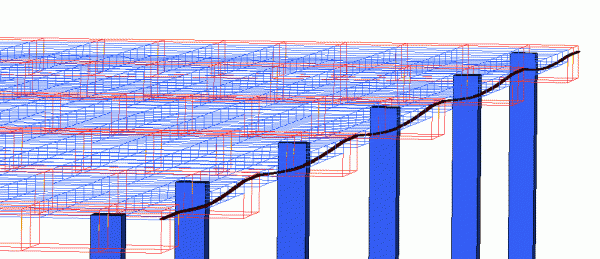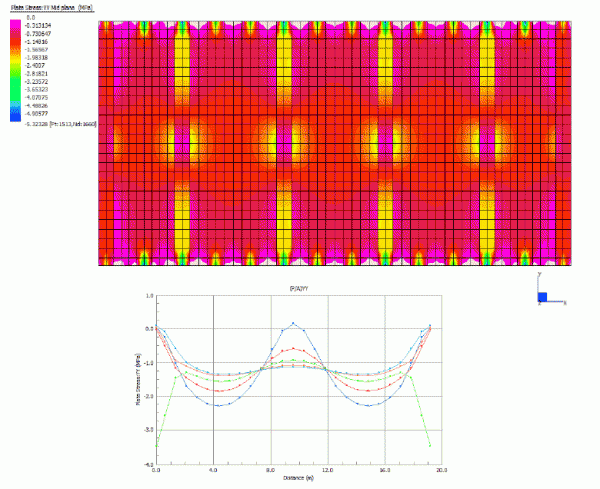튜토리얼&예제 Strand7 Modelling Post Tensioned Concrete in Strand7
페이지 정보

본문
Modelling Post Tensioned Concrete in Strand7
Introduction
Given that Strand7 is a general purpose FEA package rather than a specialised prestressed concrete (PSC) design package, users may not be aware of the potential for Strand7 to analyse PSC structures. Strand7 can model both pre- and post-tensioned concrete, and, depending on the area of concern, users can analyse both highly localised effects such as the stress distribution through an anchorage zone as well as global structural behaviour such as the moments developed resulting from discrete draped tendons.
Given that Strand7 is a general purpose FEA package rather than a specialised prestressed concrete (PSC) design package, users may not be aware of the potential for Strand7 to analyse PSC structures. Strand7 can model both pre- and post-tensioned concrete, and, depending on the area of concern, users can analyse both highly localised effects such as the stress distribution through an anchorage zone as well as global structural behaviour such as the moments developed resulting from discrete draped tendons.
This document outlines one method for modelling a post-tensioned one-way slab (150mm thick) and transverse band beams (400mm deep) with discrete draped bonded tendons. In addition to self-weight and prestress, the slab will be subjected to a 1 kPa superimposed dead load and a 7.5 kPa live load.
One of the difficulties which arises when modelling PSC is trying to find a balance between accurately capturing the physical behaviour of the structure and time spent modelling. For instance, in trying to model the structure shown above, ideally the tendon profile would be known before meshing the slab and band beams, in order for the plates to be dimensioned such that there is a node line at the location of each tendon. Further, given that the curvature of the tendons need to be discretised into a series of straight beam segments, it would be convenient if the tendons were segmented such that they had the same length as the plate elements (in the direction parallel to the tendon) forming the slab and band beams. In this arrangement, the method of achieving compatibility between the slab and tendons would be fairly simple, however this is impractical in terms of using Strand7 as a design tool, as virtually the entire model would need to be reconstructed for each design iteration.
As such, this document aims at developing a practical method for modelling PSC which is conducive to the iterative nature of design. This will allow users to modify things such as tendon profile and spacing without having to adjust the rest of the model to suit.
첨부파일
-
ST7-1.40.35.6 Modelling Post Tensioned Concrete in Strand7.zip (1.8M)
0회 다운로드 | DATE : 2021-02-01 14:44:32
댓글목록
등록된 댓글이 없습니다.




